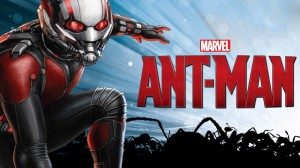yes, better than Starwars and World of Warcraft together, the wars of ants. Last year in our lab, we set up wars between different species, among the most aggressive in the world.
I’m sure you can imagine. Monstrous armies of millions of Unsullied warriors, impervious to danger, dedicated to the death, working together with the efficacy given by millions of years of evolution, all entirely bent to one single purpose, destroying the other armies. I’m certain to are picturing this. Well, you are picturing it wrong, you immature brutes. So, what did we do and why did we do it?
It was a time when a Ph D student (Cleo Bertelsmeier) was studying the effect of climate change on invasive ants. I’ve told you already why we study invasive ants. If you’ve missed it, you can read it here. The first part of the PhD thesis was to build up species distribution models to try and predict where invasive ants would find favorable regions with climate change (ants are very sensitive to climate, and milder winters may mean higher probability of establishment). And the result was that some of the most problematic invasive ant species were predicted to arrive at the same place in several regions. And because the most obvious characteristics of all these invasive ants is that they are extremely efficient at removing other arthropods, starting with local ant species, we naturally wondered what would happen if two of such Hun armies were to clash in newly invaded territories. Or in other words, is there among these tiny berserk beasts one that would take over all the others (and the rest of the world with it).
So we set up colonies of four of the worst of the worst. These were the invasive garden ant Lasius neglectus, the Argentine ant Linepithema humile, the big-headed ant Pheidole megacephala and the electric ant Wasmannia auropunctata. The experiment set up by Cleo was not really the wars you pictured, but they were enough for our purposes: boxes with colonies of 300 workers and one queen, put into contact by a tiny tube, and days of counting the dead and the survivors. And these taught us a lot. First, that the experiments of one worker versus another in a Petri dish – often set up to establish dominance hierarchies among ant species – are not well suited, because some ants species need other workers to kill others. Some ants hold the enemy while it is being cut into pieces, and you can’t do that when you’re alone, and you’ll systematically lose in duels but not necessarily a battle. It also mean that classical experiments of 10 vs 10 workers in a Petri dish are also problematic, because the lack of natural conditions can bias the results. These ants are very stressed, more or less forced to fight, and with no territory, nest or queen to defend (which was not the case in our experiment). Last, it taught us that ants adapt their strategies according to their opponents. Some species that are very aggressive and kill everything were less so when confronted to potentially stronger adversaries. Some even escaped or feigned death. And some raided the other colonies D-Day style improved with chemical weaponry, with many losses but an eventual conquest while some others remained in their strongholds and privileged defense. And eventually it taught us that when you increase complexity, for example by putting all four species together, you increase… well complexity. Here, the species that systematically lost against any of the three others won half the time when all four were fighting simultaneously.
Now I’m sure you’d like to know who was the meanest of the four. The tiny electric ant, so named for its terribly painful sting? Or the scary big-headed ants, which soldiers can cut in two any of the other species? Well, I guess that to know that you’ll have to read the paper (and perhaps that one too about their strategies)… Yes, I know, I’m mean. That’s what the ants say too.
Of course, the best fighter of all remains the Ant-man






















even your 300×300 confrontations do not give useful results. the point of such experiments is to be able to make predictions about real world scenarios, and you can’t do that with 300 individuals from nests that originally number in the hundreds of thousands and are affected by many biotic and abiotic factors.
LikeLiked by 1 person
Agreed, Asdfasdfdfsg (did you chose your anonymous name in a hurry, or were you just angry? 😉 ), 300×300 does not represent the real situation. But I wouldn’t go as far as saying it’s not useful results. Otherwise you can also throw away every single result in experimental ecology, since they NEVER represent the real situation, with its myriad of biotic and abiotic factors…
LikeLiked by 1 person